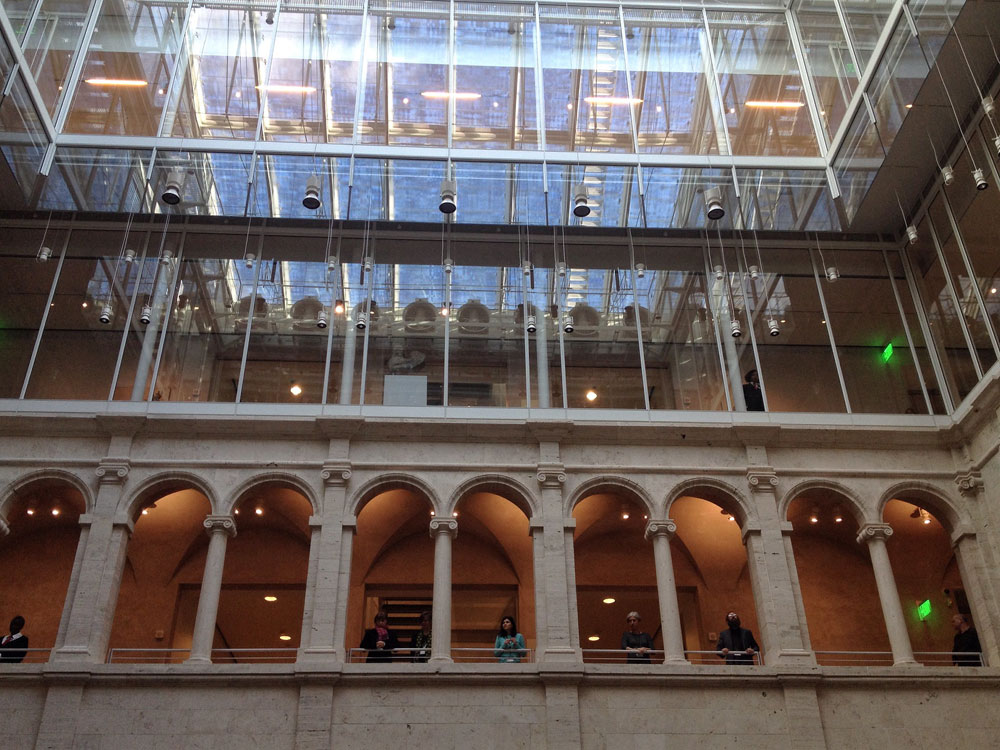
August 31, 2019; Boston Globe
The United States has begun to slowly and painfully peel back the layers of racism upon which this nation has been built. From the opening of Smithsonian National Museum of African American History and Culture in 2016 to the New York Times’ “1619 Project” observing the 400th anniversary of the beginning of American slavery, it’s no longer possible for white people to cover their ears, eyes, or mouths and claim to have played no role in it. Now, the public sphere echoes with claims of innocence or outrage at the accusation, overpowering the voices of those working to correct these historical wrongs in some way.
The art world and the world of universities are no different. They, too, sense they must respond. But the tactics taken show some very different paths to address the past.
For example, art museums grace the grounds of many major public and private universities. Generous donors give both dollars and artworks to these institutions. Not surprisingly, Harvard and its art museums are filled with memorials to the leaders of commerce, science, and industry—which includes the seldom-spoken-of slave trade.
Harvard’s earliest presidents had slaves living and working in their residences, a fact publicly acknowledged by the school only in 2016, when a plaque was unveiled in their memory on campus. The same year, under student pressure, the law school abandoned its coat of arms, which was adopted to honor the Royalls, one of the school’s founding families who were also prominent slaveholders. Louis Agassiz, a celebrated 19th-century Harvard zoologist, has been disavowed by his field for advancing racist theories concerning the intellectual inferiority of blacks, though his family name still appears prominently throughout campus.
The Baltimore Museum of Art announced it would be selling off some of its major works by well-known artists like Andy Warhol and Robert Rauschenberg to raise funds to acquire works by women and people of color. The Museum of Modern Art in New York has been shut down since June to redo and reinstall its entire collection to make it more inclusive.
Sign up for our free newsletters
Subscribe to NPQ's newsletters to have our top stories delivered directly to your inbox.
By signing up, you agree to our privacy policy and terms of use, and to receive messages from NPQ and our partners.
But Harvard has taken a different tack of openly and painstakingly clarifying the narratives supported by the artwork:
Ethan Lasser, the museums’ head of European and American art, and chief curator Soyoung Lee have picked their spots, and carefully, for their first public gestures toward addressing the museums’ generational blind spots. They’re designed for maximum impact. A Copley portrait of Nicholas Boylston now describes him as having “amassed a fortune sending enslaved Africans and foreign goods to the Americas.” Boylston, surrounded in the picture by silken finery—as he would have demanded—rests an arm on a thick ledger book; a tall ship can be seen in the bay out the window.
The old label described the fact of his trade not at all; made explicit, the picture changes completely. Lasser explained how, in this kind of portraiture, a figure might pose with the Bible or a scholarly tome. Boylston chose a business ledger—indicative, maybe, of the Brahmin’s true form of devotion. The book would have been filled, one imagines, with the names of African people moved as cargo. The ship was another representation of that cargo—again, requested by Boylston—as the source of his wealth.
Lasser says the stories museums have promulgated through their storytelling have to be reversed at every turn.
Our Colonial revisionist idea that the wealthy merchant class here was trading principally in molasses and rum are rose-colored, When you look at the slavery database, you see that slave trading was the industry in Boston in the 18th century, and that Boylston was a leading player. We don’t like Boston to be part of that story—there’s been a real resistance to that story. We like to talk about Frederick Douglass and abolitionism here, but less the other side of it.
This effort is an interesting complement to others meant to unlock the cultural codes of the social narrative role of museums. But by itself, it would be vastly insufficient to the challenge of remaking museums to reflect all of our histories and realities. That, of course, will require the balancing of collections.—Carole Levine













